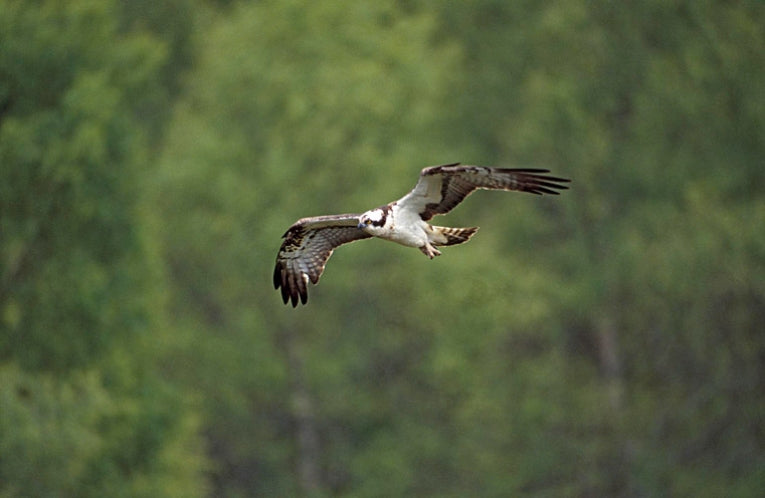Ospreys are rare in Britain. The bird was once widespread throughout the UK, but declined through persecution and by 1916 was extinct as a British nesting bird.
In 1954 ospreys recolonised the UK at Loch Garten and, although the birds have since spread, the Scottish Highlands remain the bird's UK stronghold. This fish-eating bird of prey is one of the UK's most fascinating sights and a number of pairs have been successfully breeding.
Ospreys migrate to Africa for the winter, returning in the spring, and this hazardous journey can now be analysed as some birds have been fitted with satellite tracking by the Royal Society for the Protection of Birds (RSPB).Two young ospreys: "Tore" and "Bynack" - christened for a hill and mountain near their nesting place at Loch Garten, have been fitted with radio collars so they can be followed on their perilous trek to Africa, without their parents, which started on 17th August.
So far they have reached Northern France on their journey of thousands of miles. They will stay in West Africa for two or three years, then hopefully return to the place of their birth.

The tracking device is a 22g backpack which uses both Argos and GPS satellites to give an accurate fix of around 18m. This is an enormous advance on earlier trackers which could be kilometres out. Nigel Butcher, Technical Development Officer of the RSPB says that these US-built devices, which cost $3000, are invaluable because they use both solar power and a battery, so they can last for 3 years. He hopes that the first osprey device will help them track one of their earlier migrating ospreys, Rothes, back to a northern breeding ground. Sadly, Nigel notes that three of the previous tracked ospreys did not survive, showing how dangerous this first migration is for young, inexperienced birds.

Why is it important to track osprey's migration? Richard Thaxton, of RSPB Scotland, says, "First and foremost, the most important research need is to know more about juvenile ospreys, especially their first migration, their choice of wintering areas, their lives in the first 2-3 years and their return and incorporation into the Scottish breeding population. This will help further our knowledge and understanding." There is a lot that we do not know about the way ospreys migrate and following them using the satellite tracking is expected to greatly increase our knowledge.
Richard says that ospreys will start to nest in the rest of England and Wales in the future, "With nigh-on 240 pairs re-established in UK now, probably over 220 of which are in Scotland, the re-colonisation of the rest of UK has begun, with a few pairs now in Wales and maybe up to 10 pairs in England. Ospreys were formerly widespread throughout UK so the hope is that they will continue to re-establish themselves in all their former haunts."

They are in danger from egg stealing, though this is illegal. They can be upset by humans coming too near the nest, which sometimes results in desertion, and they can also be injured by collisions with overhead wires and entanglement with fishing lines attached to fish they catch. Ospreys are also at the top of their food chain, so can accumulate chemicals from what they eat. Richard says, "Acidification of fresh waters and the resulting loss of fish is a potential threat in the future."
Caroline Rance, an osprey information officer at Loch Garten, has been following the reserve's osprey stories. She said: "Ever since they hatched Tore and Bynack have become stars of the reserve. Visitors to the reserve and the website have been following their fortunes.
"The satellite technology is fantastic, allowing us to follow their travels in detail, but it can cause our hearts to leap into our mouths when these birds do something unexpected like taking a wrong turn."
Young ospreys have to travel to West Africa on their own, without their parents to guide them, so they can make disastrous mistakes. They are expected to spend two or three years there then return to Scotland, not necessarily to Loch Garten, and the RSPB hopes they will breed. Ospreys normally live about 15 to 20 years in the wild and mate for life. There is one Scottish osprey which is thought to be 26 years old, which is an amazingly great age for this bird of prey.
Earth Times readers can follow the ospreys' journeys here.
All photos courtesy of www.rspb-images.com
Link:
Top Photo: an Osprey flying in Scotland










